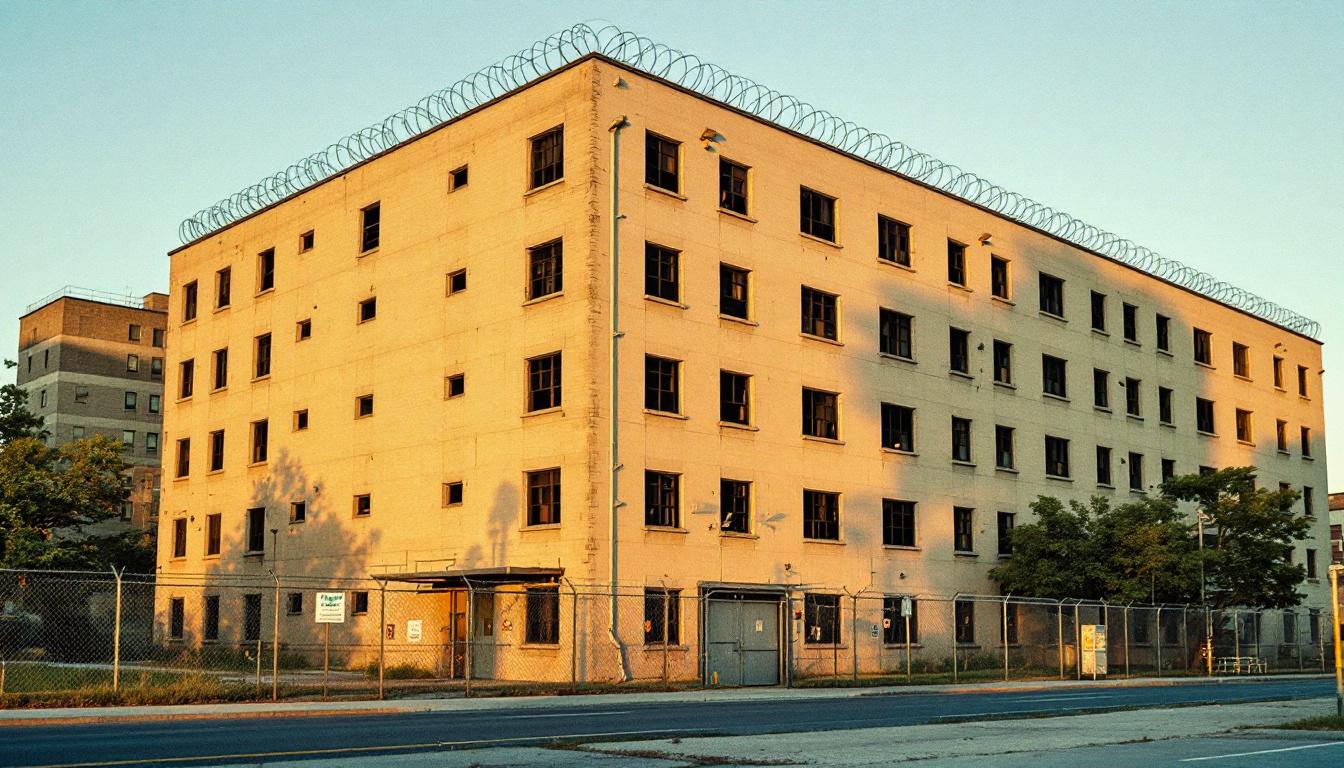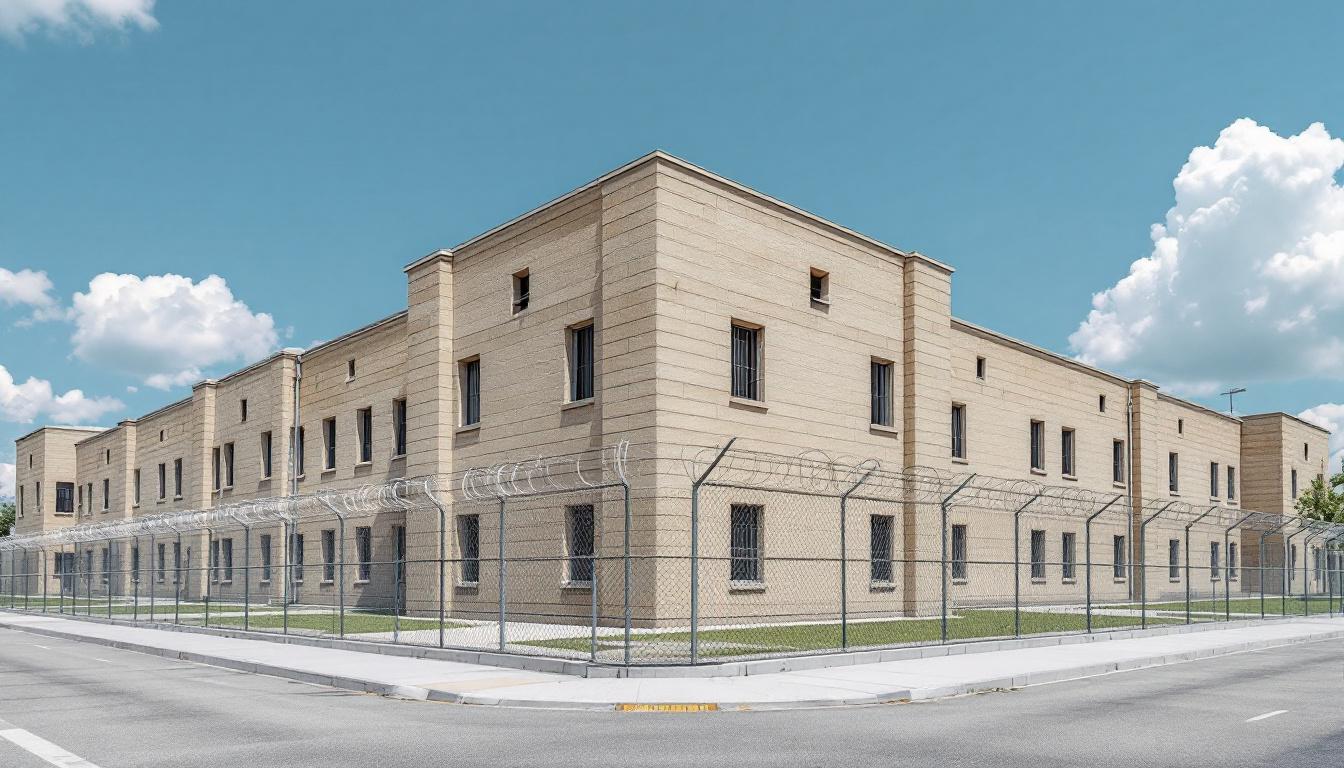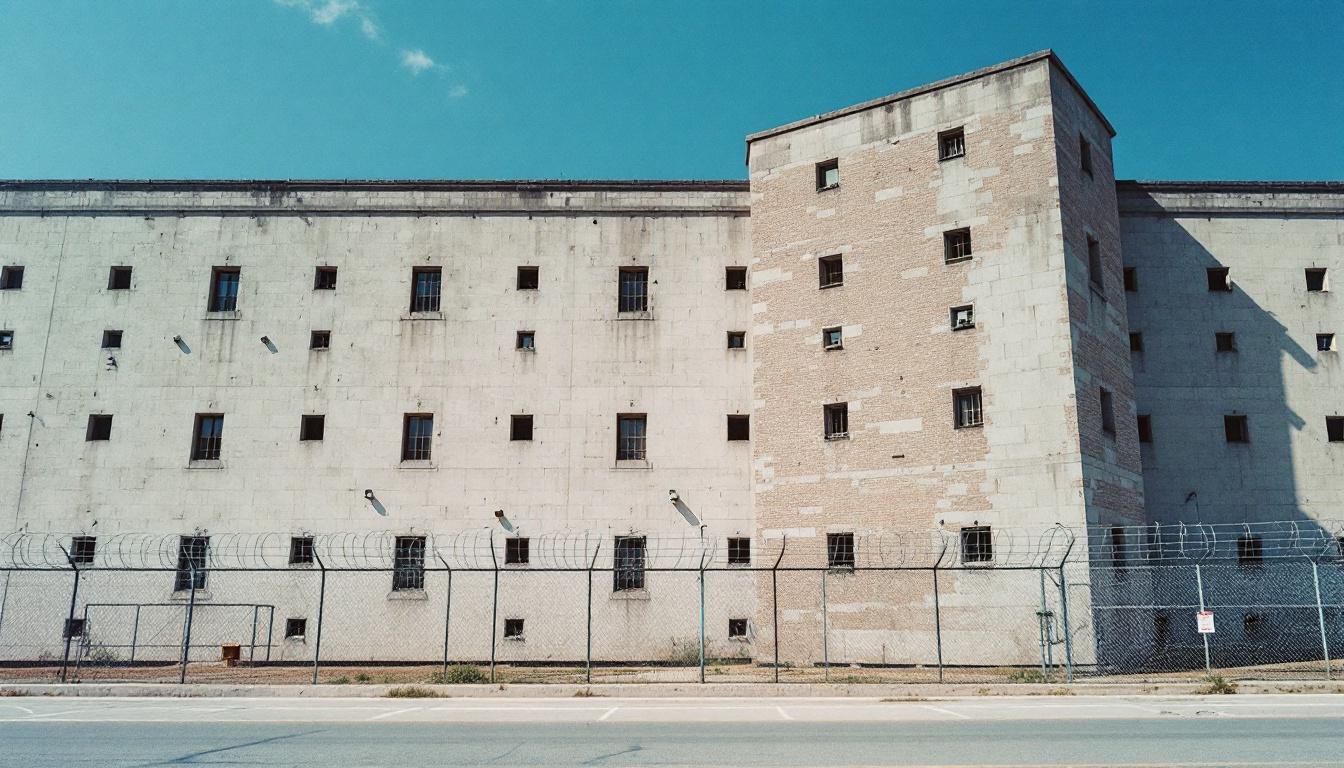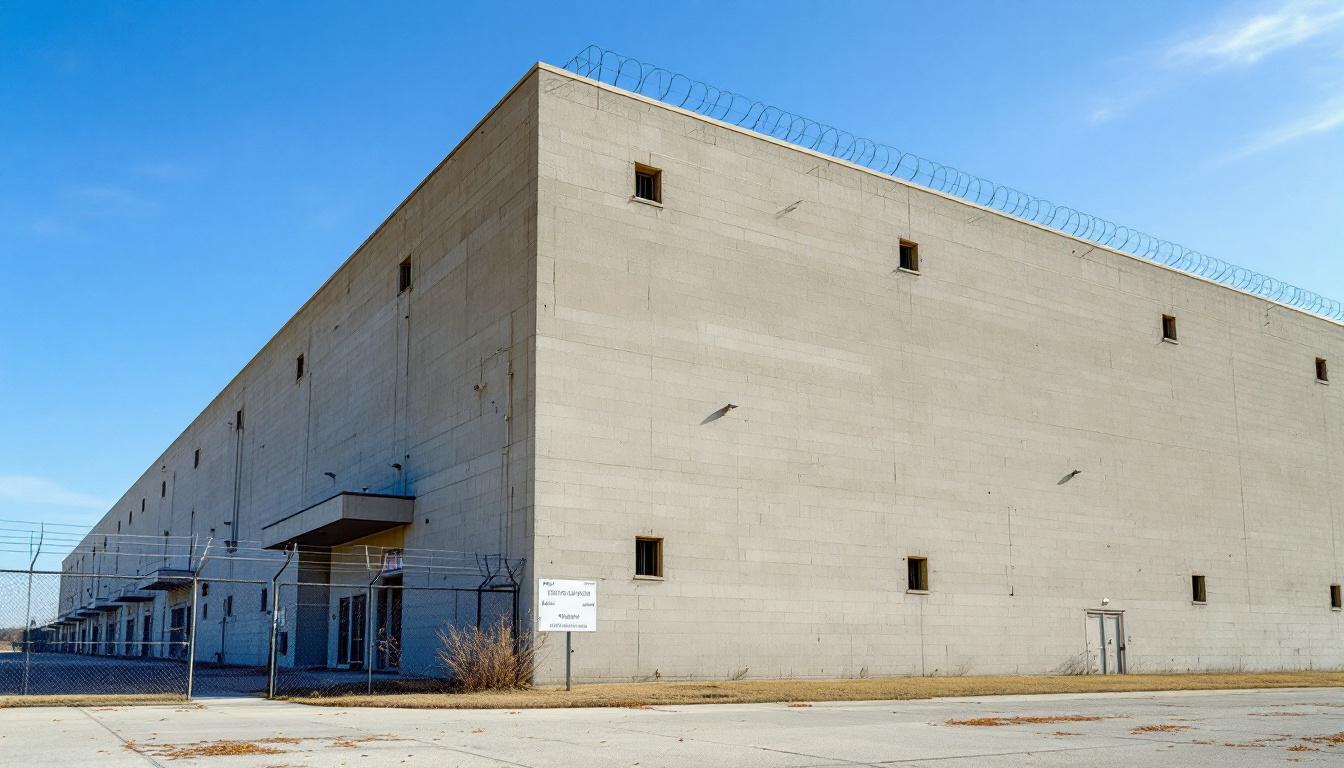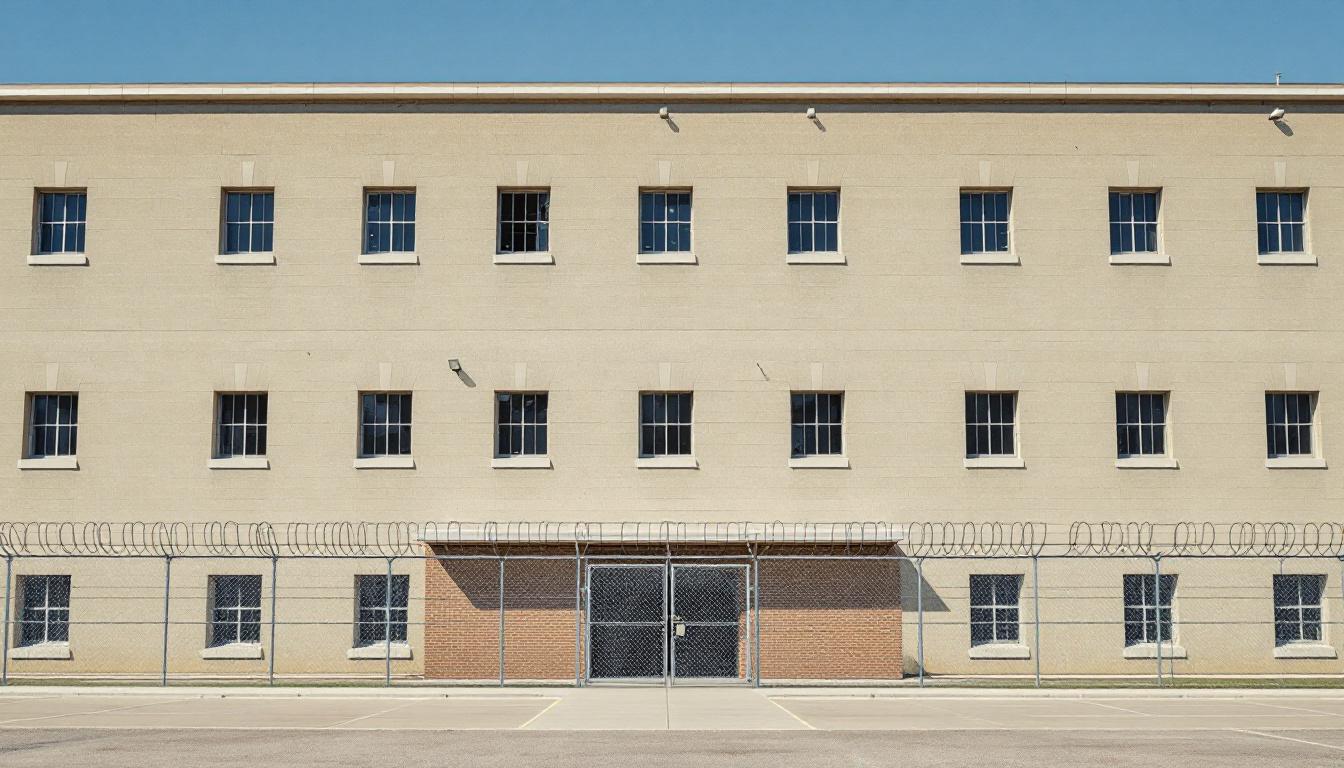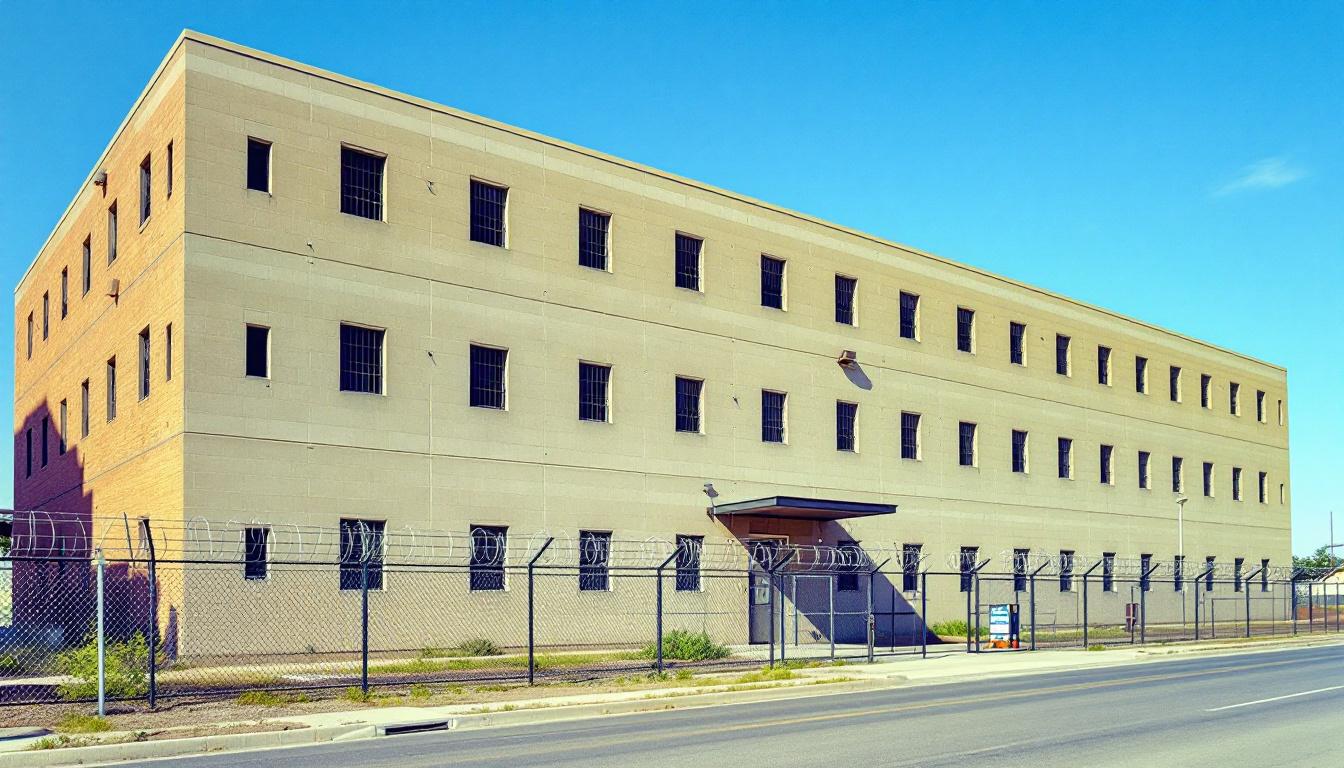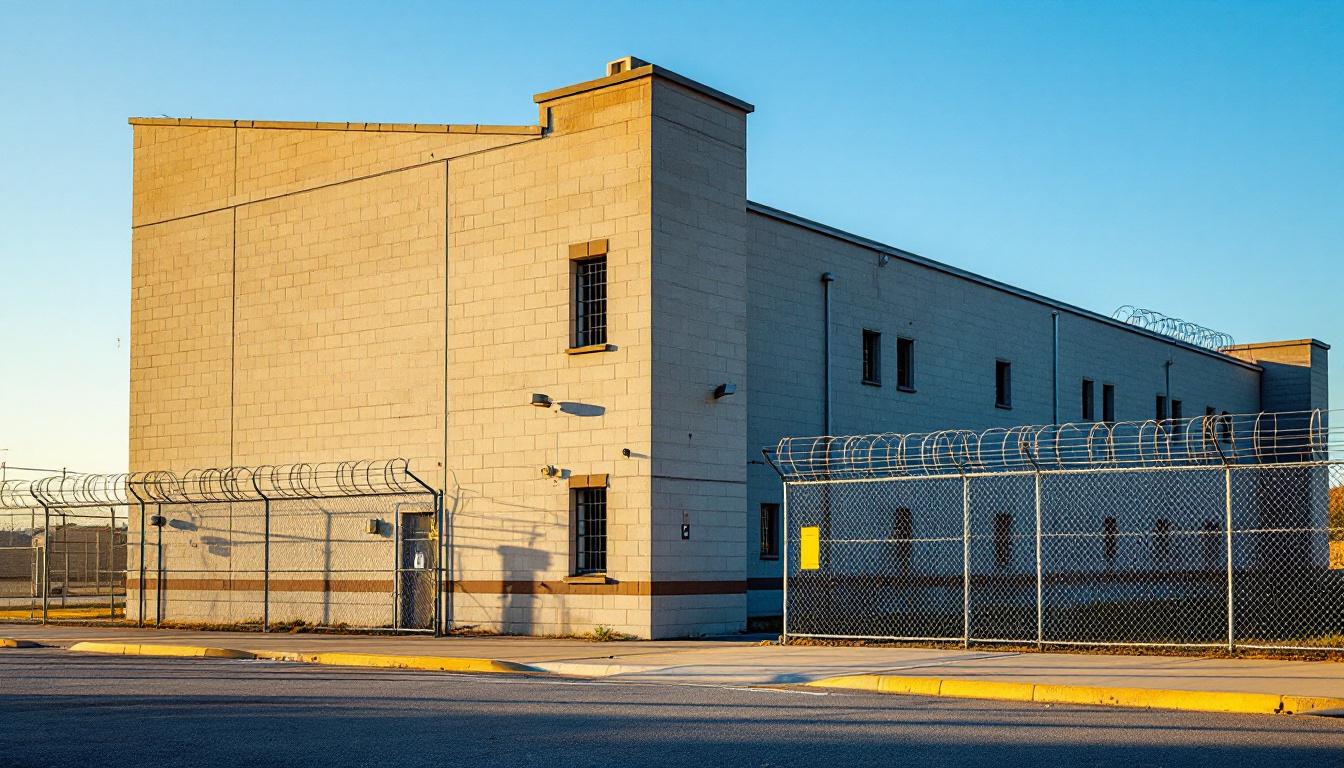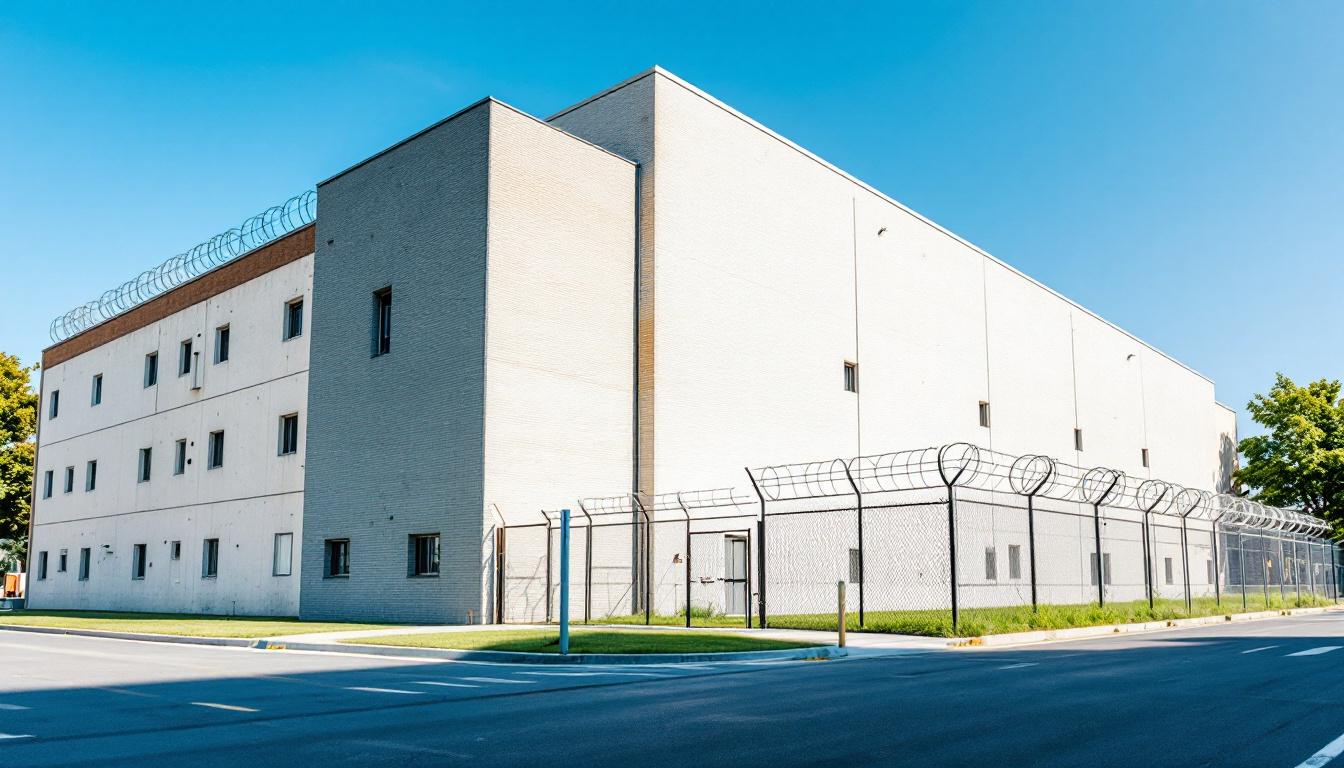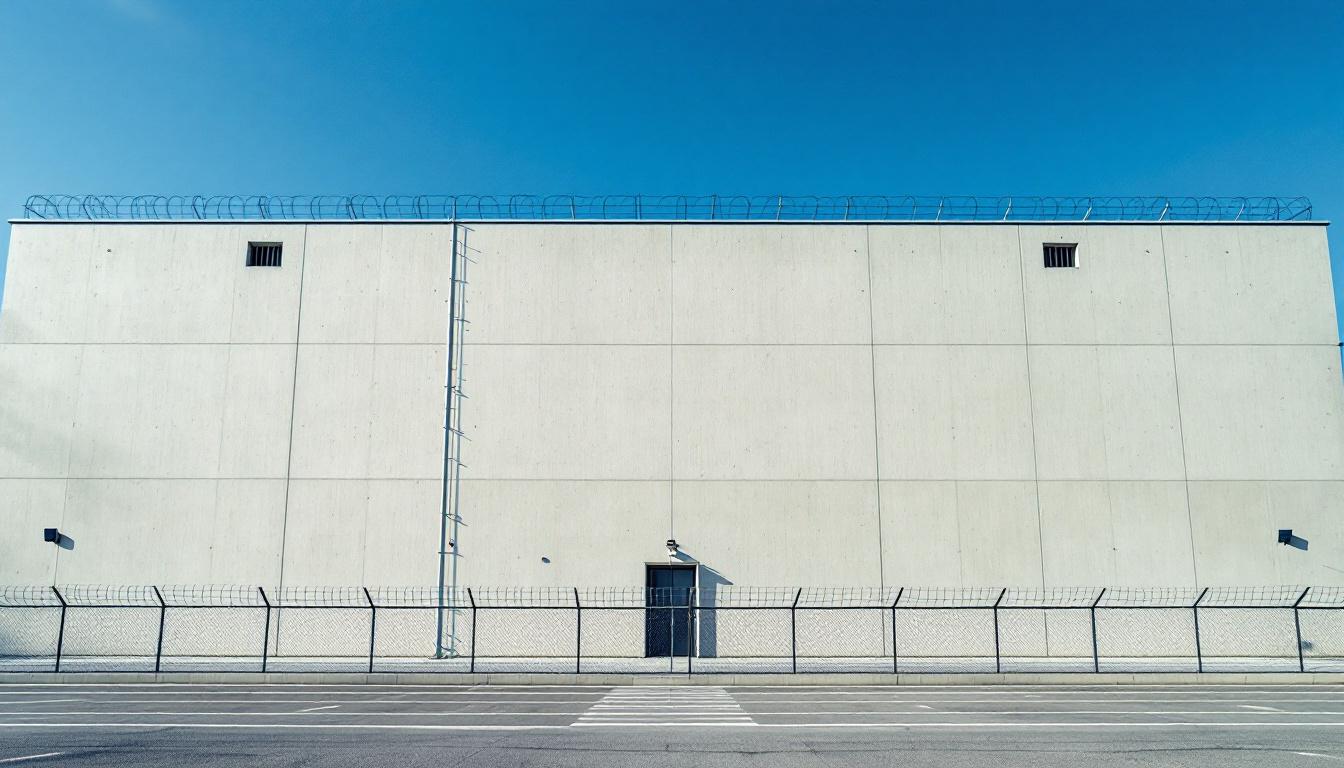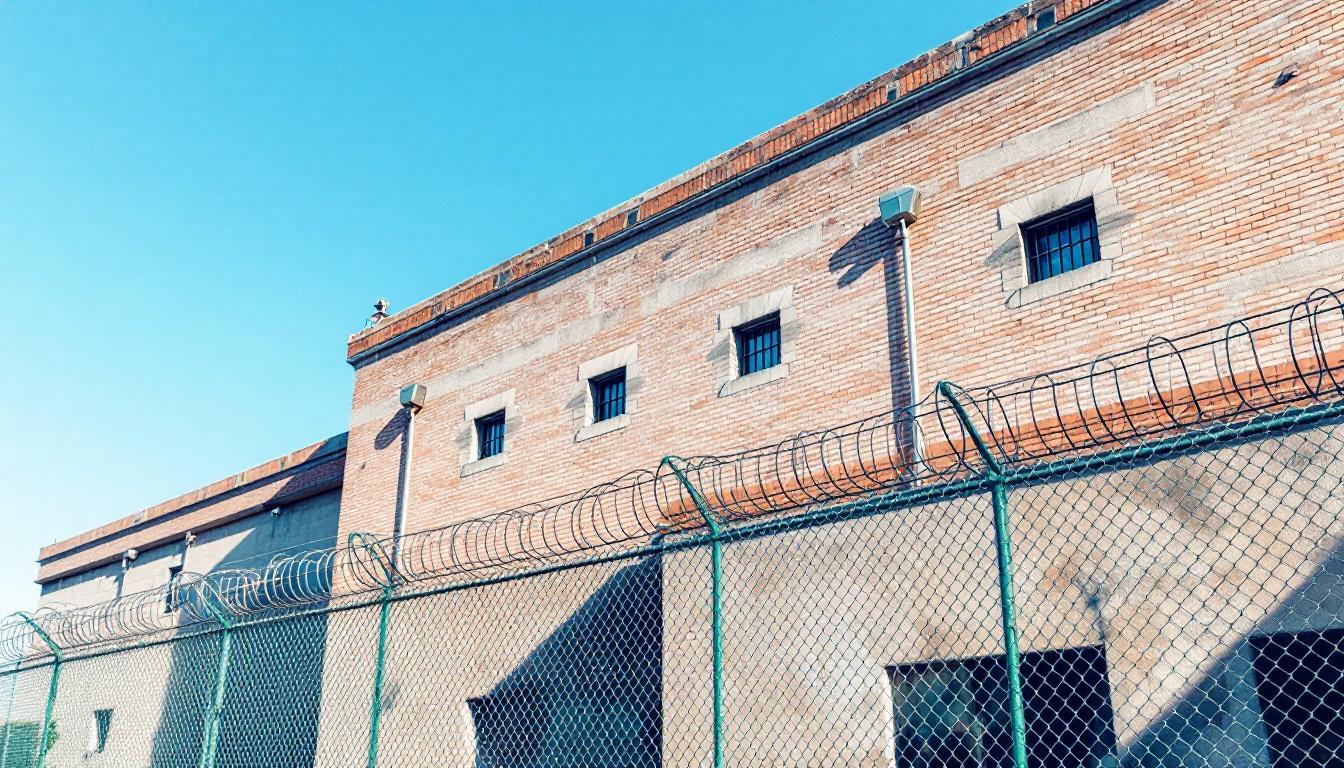
Quick Navigation
How to contact an inmate at Amos G. Ward Detention Facility
This comprehensive guide will walk you through how to connect with an inmate at Amos G. Ward Detention Facility. Follow the steps below to find an inmate and send letters and photos:
- Search for the inmate using our search tool below
- Create your account or log in to Penmate
- Write your message (up to 6,000 characters)
- Send instantly - inmates receive printed copies daily
Find an Inmate
Search for an inmate to start communicating today
Tip: You can search by first name, last name, or inmate ID number
To contact a person at Amos G. Ward Detention Facility start by searching for the person on the official facility website. Perform a search by following these steps:
- Step 1: Enter their first name and last name into the search form and click "Search"
- Step 2: Locate their inmate record
- Step 3: Write down their Inmate ID and any housing information provided
Important! Be sure to enter the person's full name. Nicknames should not be used.
How to Send Messages to Inmates

You can use your phone or computer to send emails, letters, and photos to an inmate. Messages are sent electronically to inmate tablets or kiosks at the facility. If you would like to send a message, start by searching for an inmate at Amos G. Ward Detention Facility.
Sending Photos and Postcards

A great way to send love and support to a loved one at Amos G. Ward Detention Facility is to send photos and postcards. It only takes a few minutes to send photos from your phone and it makes a huge difference. You can also mail postcards with words of support and inspiration, or design your own postcard for special moments like birthdays and holidays.
Important! Be sure not to send any explicit photos or they may not be approved by the facility. You can also use a photo printing app like Penmate to make sure your photos are printed at the correct size (4x6 or 3x5) and are mailed according to the rules and regulations of Amos G. Ward Detention Facility.
Frequently asked questions about Amos G. Ward Detention Facility
-
How long does it take to deliver a message?
If you're sending an email message your letter is usually delivered within 24-48 hours. For messages sent via mail you should expect delivery within 3-7 days. All messages will need be approved by Amos G. Ward Detention Facility.
-
How much does it cost to send a message to Amos G. Ward Detention Facility?
You can send a message free using your phone or mail a message via USPS for the price of a $0.60 stamp and envelope. You can also purchase credits or e-stamps from services starting at $1.99.
-
What services can I use to contact an inmate at Amos G. Ward Detention Facility?
Penmate
You can use Penmate to send letters and photos to an inmate from your phone. It's an easy way to stay in touch during your loved one's incarceration. Use the inmate locator to find an inmate's location and contact information, then you can send messages within a few minutes.
Securus messaging
Securus may be another option for communicating with an inmate at Amos G. Ward Detention Facility. You can create a friends and family account and purchase credits to send messages. All messages will be reviewed and must be approved by the facility.
JPay
Some county jails and state prisons may support sending messages with JPay. You must register an account with the system, find your loved one, and purchase stamps to send messages. For some locations you can also attach photos.
Smart Jail Mail
You may also check if Smart Jail Mail is available at Amos G. Ward Detention Facility. Smart Jail Mail is operated by Smart Communications and has contracted with some state and county jails. After purchasing credits, your messages and photos are sent to the facility, printed out, and then handed out to your loved one.
-
What is the mailing address of Amos G. Ward Detention Facility?
Mailing address:
Amos G. Ward Detention Facility
201 S Cherokee Ave
Claremore, OK 74017
Phone: (918) 342-9700 -
What are the visiting hours at Amos G. Ward Detention Facility?
Visiting hours at Amos G. Ward Detention Facility vary by housing unit and security level. Generally, visits are scheduled on weekends and holidays, with some facilities offering weekday visits. Contact the facility directly at (918) 342-9700 or check their website for the current visiting schedule. Visits typically last 30-60 minutes and must be scheduled in advance.
-
What items are prohibited when sending mail to Amos G. Ward Detention Facility?
Prohibited items typically include: cash, personal checks, stamps, stickers, glitter, glue, tape, staples, paperclips, polaroid photos, musical or blank greeting cards, hardcover books, magazines with staples, and any items containing metal or electronics. Only send letters on plain white paper with blue or black ink. Photos must be printed on regular photo paper (no Polaroids). Always check with Amos G. Ward Detention Facility for their specific mail policies.
-
How do I send money to an inmate at Amos G. Ward Detention Facility?
You can send money to an inmate at Amos G. Ward Detention Facility through several methods: 1) Online using JPay, Access Corrections, or the facility's approved vendor, 2) Money orders mailed directly to the facility with the inmate's name and ID number, 3) Kiosks located in the facility lobby, or 4) Over the phone using a credit or debit card. Fees vary by method, typically ranging from $2.95 to $11.95 per transaction.
-
Can I schedule a video visit with an inmate at Amos G. Ward Detention Facility?
Many facilities now offer video visitation as an alternative to in-person visits. At Amos G. Ward Detention Facility, video visits may be available through services like Penmate, Securus Video Connect, GTL, or ICSolutions. Video visits typically cost $10-20 for 20-30 minutes and must be scheduled in advance. You'll need a computer or smartphone with a camera and reliable internet connection. Contact the facility for their specific video visitation policies and approved vendors.
-
What identification do I need to visit an inmate at Amos G. Ward Detention Facility?
All visitors must present valid government-issued photo identification such as a driver's license, state ID, passport, or military ID. Minors must be accompanied by a parent or legal guardian who can provide the minor's birth certificate. Some facilities require visitors to be on the inmate's approved visitation list, which may require a background check. Contact Amos G. Ward Detention Facility for specific ID requirements and visitor approval procedures.
-
How can I find out an inmate's release date?
To find an inmate's release date at Amos G. Ward Detention Facility, you can: 1) Use the online inmate search tool if available, 2) Call the facility's records department, 3) Contact the inmate's case manager or counselor, or 4) Have the inmate provide this information during a call or visit. For privacy reasons, some facilities only release this information to immediate family members.
Facility Overview
Contact Information
Amos G. Ward Detention Facility201 S Cherokee Ave
Claremore, OK 74017
Phone: (918) 342-9700
Official Website

About Amos G. Ward Detention Facility
County jails across Oklahoma serve as crucial transition points where individuals await court proceedings while maintaining connections to their home communities, and Rogers County Jail, Ok exemplifies this vital role within Claremore’s broader support network. This OK correctional facility operates with an understanding that most individuals in custody will eventually return to their neighborhoods, making community-centered programming and accessible resources essential components of daily operations. The facility typically works alongside local organizations, faith-based groups, and social services to ensure that the population services extend beyond basic detention to include meaningful preparation for reintegration.
Located in the heart of Rogers County, the jail serves as more than a holding facility—it functions as a bridge between the justice system and the community resources that individuals and their families may need during challenging times. Programming often includes educational opportunities, substance abuse counseling, and job readiness training that connects directly with Claremore’s local employers and service providers. Family visitation and communication services typically receive priority, recognizing that maintaining these relationships strengthens both individual outcomes and community stability upon release.
The facility’s approach to rehabilitation generally emphasizes practical skills and community connections rather than isolation from support systems. Mental health services, medical care, and case management may be coordinated with regional providers to ensure continuity of care that extends beyond an individual’s time in custody. This community-centered model reflects the understanding that successful reintegration depends not dedicated on individual change but on the strength of partnerships between correctional facilities, local organizations, and the families who provide ongoing support throughout the justice process.
Programs & Services
Support flows through multiple pathways at Rogers County Jail, where various programs work together to address the diverse needs of the population. The facility typically operates under a philosophy that recognizes successful reintegration requires addressing educational gaps, developing practical skills, and fostering personal growth. These programs often focus on building connections—whether to community, family, or faith—that may serve as anchors during the transition back to society.
Educational programs form a cornerstone of the facility’s offerings, providing opportunities for the population to advance their academic credentials and develop essential life skills. These initiatives may include basic literacy instruction, GED preparation, and computer skills training that help participants build confidence while acquiring marketable abilities. Also, vocational training programs typically offer hands-on experience in various trades, allowing individuals to develop practical skills that may translate directly into employment opportunities upon release.
Faith-based programs provide spiritual support and community connection for those seeking such guidance during their incarceration. The facility often includes community service opportunities that allow the population to contribute meaningfully while developing a sense of civic responsibility. Also, food service operations may serve dual purposes—maintaining facility operations while providing valuable work experience and job training for participants who wish to pursue careers in the culinary field.
Daily Life & Visitation
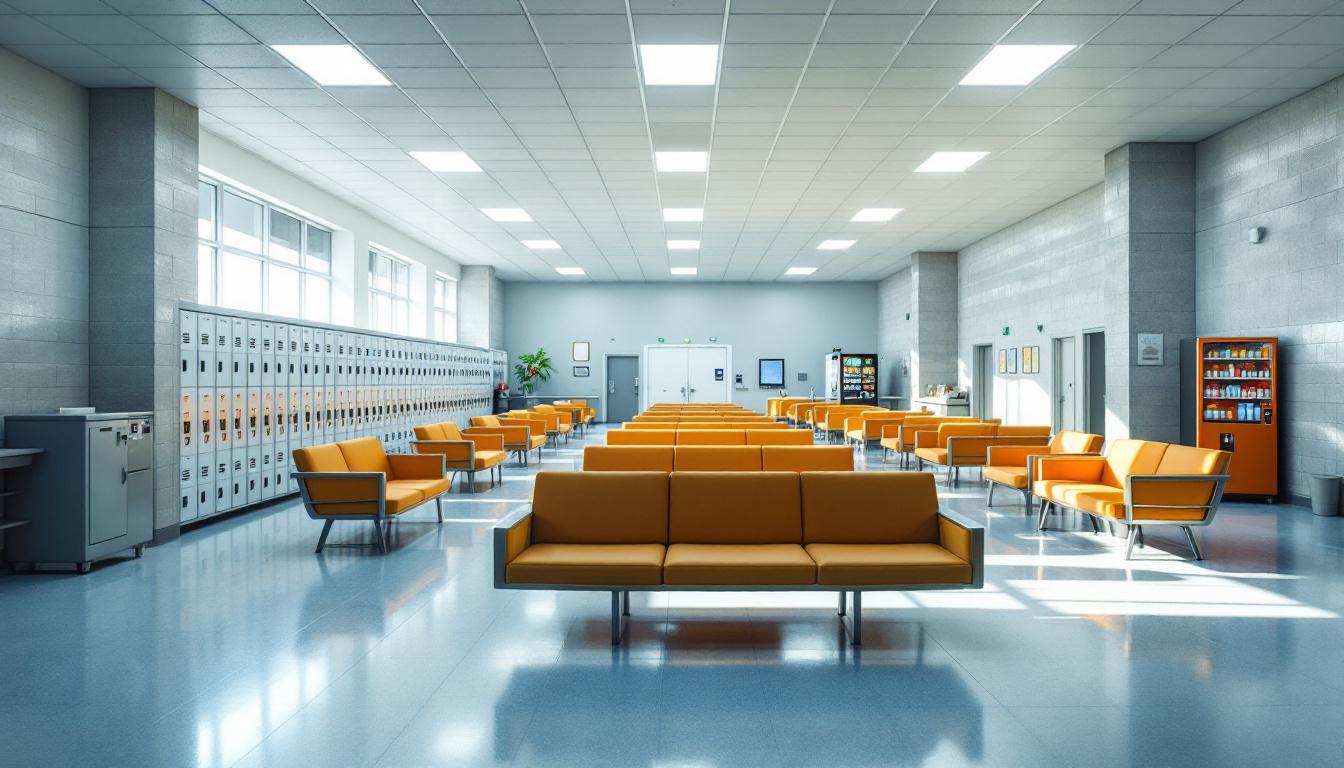
Systematic organization shapes every aspect of life within the Rogers County Jail, where structured schedules and clear protocols actively govern the daily experience for the population. At present, residents typically follow established routines that begin with early morning counts and progress through designated meal times, programming periods, and evening lockdown procedures. The facility actively maintains order through consistent scheduling, with the population generally moving between activities according to predetermined timeframes that supply predictability to each day.
Housing arrangements typically consist of dormitory-style units or individual cells, depending on classification levels and available space within the facility. The population generally shares common areas during designated periods, with meals usually served in central dining areas or delivered to housing units based on security requirements. Personal property allowances are typically limited to essential items, while commissary services may offer additional personal care products and snacks for those with available funds.
Also important to daily structure are the various programs and work assignments that supply meaningful activity for the population. Educational opportunities, religious services, and recreational periods typically provide scheduled breaks from routine confinement. However, visitation policies generally operate on specific schedules, allowing family members to maintain contact through designated visiting hours or video conferencing systems. Work assignments within the facility, such as kitchen duties or maintenance tasks, often provide the population with structured responsibilities while contributing to facility operations. Communication options usually include monitored phone calls and correspondence, helping residents maintain connections with their support systems during their time at the facility.
Ready to Connect?
Start communicating with your loved one today
Search for an Inmate
